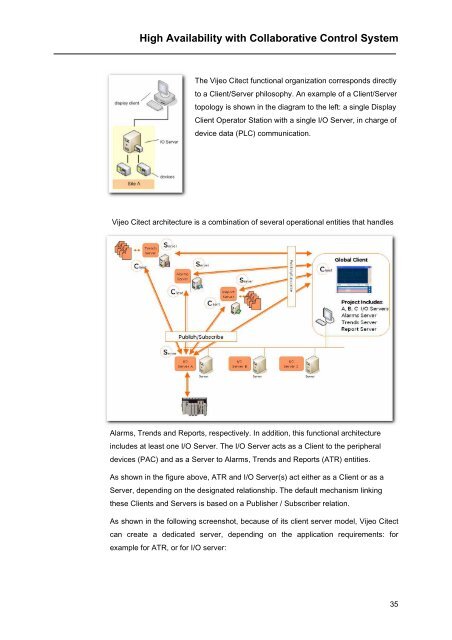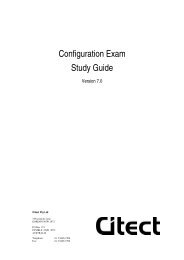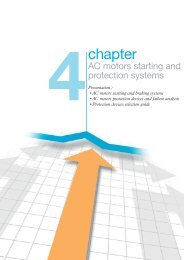High Availability Theoretical Basics - Schneider Electric
High Availability Theoretical Basics - Schneider Electric
High Availability Theoretical Basics - Schneider Electric
You also want an ePaper? Increase the reach of your titles
YUMPU automatically turns print PDFs into web optimized ePapers that Google loves.
<strong>High</strong> <strong>Availability</strong> with Collaborative Control System<br />
The Vijeo Citect functional organization corresponds directly<br />
to a Client/Server philosophy. An example of a Client/Server<br />
topology is shown in the diagram to the left: a single Display<br />
Client Operator Station with a single I/O Server, in charge of<br />
device data (PLC) communication.<br />
Vijeo Citect architecture is a combination of several operational entities that handles<br />
A<br />
l<br />
a<br />
r<br />
m<br />
s<br />
,<br />
T<br />
r<br />
e<br />
n<br />
d<br />
s<br />
a<br />
Alarms, Trends and Reports, respectively. In addition, this functional architecture<br />
includes at least one I/O Server. The I/O Server acts as a Client to the peripheral<br />
devices (PAC) and as a Server to Alarms, Trends and Reports (ATR) entities.<br />
As shown in the figure above, ATR and I/O Server(s) act either as a Client or as a<br />
Server, depending on the designated relationship. The default mechanism linking<br />
these Clients and Servers is based on a Publisher / Subscriber relation.<br />
As shown in the following screenshot, because of its client server model, Vijeo Citect<br />
can create a dedicated server, depending on the application requirements: for<br />
example for ATR, or for I/O server:<br />
35

















